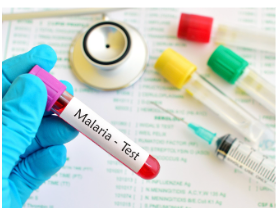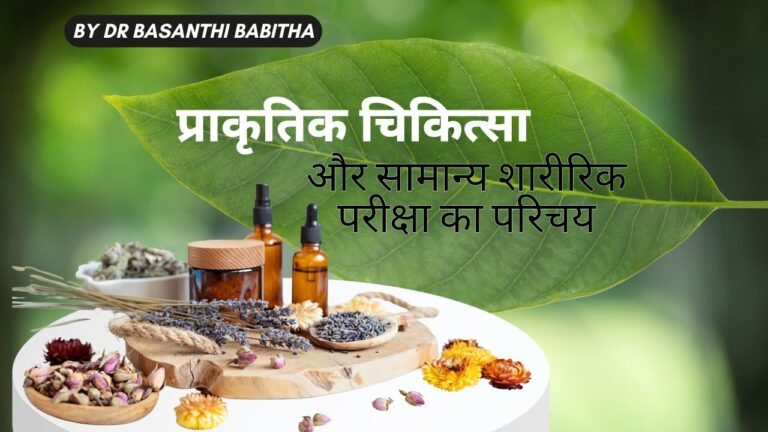Rainy Season: Disease and Prevention
Rainy Season: Disease and Prevention
As we know, Bharat experiences three primary seasons, with the monsoon or rainy season being one of them. While the rainy season brings refreshing changes to the environment, it also poses several health challenges due to increased humidity and moisture. These conditions create a breeding ground for bacteria and infections, potentially affecting our immunity and overall health.
Common Diseases During the Rainy Season:
The rainy season is marked by a higher incidence of bacterial and viral infections. Common ailments include:
- Running Nose
- Viral Fever
- Diarrhoea
These conditions are often seen in patients visiting naturopathy practitioners. While medications are available, home remedies can be quite effective for managing these ailments, provided the situation is under control.

Importance of Prevention and Home Remedies
Today’s lecture is divided into two parts. We will discuss the most common diseases during the rainy season and explore preventive measures and home remedies. Our goal is to help you enjoy this beautiful season while maintaining your health.
Enjoying the Rainy Season Safely
The rainy season offers a unique opportunity to enjoy nature’s beauty, with lush greenery, waterfalls, and rejuvenated landscapes. For those living near Mumbai or Maharashtra, places like Lonavala become popular destinations for their scenic beauty and fresh air.
Visiting such green areas can be beneficial for your health, especially for asthma patients, as the oxygen levels are higher and pollution is comparatively low. Engaging in activities like small treks (30 minutes to an hour) can boost your breathing exercises, enhance oxygen consumption, and promote detoxification through sweating.
Tips for the Rainy Season
- Boost Immunity:
- Visit green areas to consume pure oxygen.
- Engage in mild physical activities like small treks to enhance lung function and overall health.
- Maintain Hygiene:
- Avoid outside food and open water sources.
- Prefer home-cooked, fresh food to minimize the risk of infections.
Dietary Adjustments
During the rainy season, the digestive system can be affected by humidity and temperature changes. Jainism practices, such as having dinner before sunset (chovihar), can be beneficial. Eating early allows for proper digestion before sleep, promoting better health and reducing issues like gas, indigestion, and bloating.
General Precautions
Early Dinner:
- Complete dinner by 6:00 to 6:30 PM to ensure proper digestion before sleep.
- Avoid late-night meals to prevent digestive disturbances and ensure restful sleep.
Immunity and Hygiene: - Focus on boosting immunity and maintaining hygiene to reduce the risk of infections.
- Encourage patients to adopt these practices for better health outcomes.
Understanding Dengue Fever: Symptoms, Diagnosis, and Home Remedies

Introduction
Dengue fever is one of the most common viral diseases spread by the bite of an infected female mosquito. According to recent observations, approximately one in four people may be affected by dengue. However, not everyone with dengue experiences severe health issues. Early detection and proper care can prevent complications.
Common Symptoms of Dengue
The symptoms of dengue can vary in severity, but the most common signs include:
- High Fever: Dengue fever is characterised by a persistent high fever that often remains above 102-103°F.
- Skin Rashes: Patients may experience various types of rashes on the skin.
- Fatigue: A general feeling of tiredness and lethargy is common.
- Low Platelet Count: One of the key indicators of dengue is a low platelet count, often observed during a Complete Blood Count (CBC) test. White Blood Cell (WBC) counts may also be affected.
Pain: Severe or mild body pain, including headaches, joint, and muscle pain, is often reported.
Diagnosis
A blood test is essential to confirm dengue fever, with low platelet counts and WBC changes being significant indicators.
Treatment and Home Remedies
While there is no specific antiviral treatment for dengue, supportive care and home remedies can help manage symptoms:
1)Hydration: Maintaining hydration is crucial. Consuming a liquid diet can help alleviate symptoms and support recovery. Recommended fluids include:
- Fresh tender coconut water.
- Oral Rehydration Solutions (ORS).
- Lemon and raw sugar water with rock salt.
These fluids help keep the body hydrated and facilitate toxin removal through urination.
2)Buttermilk: Freshly prepared buttermilk or coconut buttermilk can be beneficial. For those who consume dairy, cold buttermilk is a good option.
3)Orange Juice: Rich in vitamin C, orange juice helps boost immunity. Consuming one or two glasses a day is recommended.
4)Papaya Leaf Juice: Papaya leaf juice is known for its effectiveness in maintaining platelet counts and improving WBC counts. Consuming fresh papaya leaf juice daily can aid recovery.
5)Dietary Adjustments: Avoid fried and spicy foods, which can cause digestive issues. Instead, opt for a simple diet such as:
Moong Dal Khichdi: A light, nutritious dish made from green moong dal and rice. The ideal proportion is 80% dal and 20% rice, with a tablespoon of ghee for easy digestion.
6)Fasting and Liquid Diet: If possible, staying on a liquid diet or fasting for one or two days can help. However, this may not be suitable for diabetic patients, children, or the elderly, who can rely on moong dal khichdi as a dietary staple.
Pranayama and Deep Breathing for Health and Well-Being
Pranayama and deep breathing are ancient practices rooted in the rich tradition of yoga. These techniques, designed to regulate and enhance our breathing, have been known to improve overall health and well-being. Regardless of your physical condition, pranayama can be practised in any posture or position, making it an accessible and versatile option for everyone.
The Importance of Pranayama

Pranayama, or controlled breathing, is not confined to specific postures like some yoga asanas. It can be practised while sitting, lying down, or even standing, depending on what suits your body best. This flexibility means that pranayama can be integrated into daily life, offering numerous benefits without needing elaborate setups or environments.
For those who are relatively fit, incorporating certain yoga asanas into your routine can amplify the benefits of pranayama. Among these, the Surya Namaskar, or Sun Salutation, stands out. This sequence of 12 poses is designed to work every part of your body, boosting metabolism, enhancing immunity, and cleansing the body of toxins. Practising Surya Namaskar daily, within your body’s capacity, can serve as a powerful adjunct to pranayama and deep breathing exercises.
Managing Dengue with Yoga and Herbal Remedies
Dengue fever is a mosquito-borne illness characterised by severe flu-like symptoms. In its early stages, it can sometimes be managed at home using natural remedies and practices such as pranayama and deep breathing. These techniques help to enhance oxygen flow, reduce stress, and improve immune response.
In addition to yoga and breathing exercises, certain herbs have shown promise in alleviating symptoms of dengue. Giloy (also known as Guduchi or Tinospora cordifolia) is a well-known herb used in traditional medicine for its immune-boosting properties. It gained significant attention during the COVID-19 pandemic for its potential benefits in enhancing immunity. Another beneficial herb is Tulsi (Holy Basil), renowned for its blood-purifying, antifungal, and antibacterial properties. Consuming these herbs in the form of fresh juice or teas can support the body’s recovery process.
Papaya leaf juiceis a nother traditional remedy believed to help increase platelet counts and white blood cells, which are crucial during dengue recovery. It is advised to check blood levels regularly to monitor improvement.
Other supportive measures include consuming alfalfa, which is rich in calcium and minerals, helping to maintain strength and prevent drastic weight loss. Mixing herbal powders like giloy or alfalfa with honey can enhance their palatability and provide additional nutritional benefits.
Addressing Chikungunya with Natural Remedies

Like dengue, chikungunya is a viral illness spread by mosquitoes. It is characterised by acute joint pain, high fever, fatigue, and sometimes more severe complications affecting the heart, kidneys, or eyes. Recovery from chikungunya can be prolonged, with joint pain and stiffness often persisting for months.
To aid recovery, several home remedies can be utilised. Ginger and lemon tea are effective due to their anti-inflammatory and pain-relieving properties. Simply boil water, add crushed ginger, let it steep, then add lemon juice. For non-diabetics, a tablespoon of honey can be added for sweetness and additional benefits.
Maintaining a diet of easily digestible foods is crucial during recovery. Pomegranate juice is rich in minerals and supports the maintenance of red blood cells. Moong pani (a water-based mung bean soup) is rich in protein, helping to boost immunity, and vegetable soups are easy on the digestive system.
Dietary Considerations for Recovery
During illness, the body requires easily digestible foods to conserve energy for healing. It is advisable to avoid gluten-rich grains, as gluten can be difficult to digest. Instead, opt for gluten-free millets, which are easier on the stomach and provide essential nutrients.
Using ghee instead of oils in cooking can help reduce joint stiffness, a common symptom in chikungunya. Ghee is believed to aid in lubricating joints, improving mobility, and reducing inflammation caused by the formation of uric acid crystals.
Discussion on Malaria: Symptoms, Prevention, and Exercise Recommendations
Introduction: Malaria is a prevalent disease affecting individuals of all ages, spread by Anopheles mosquitoes. Here, we delve into its symptoms, preventive measures, and recommendations for maintaining health during the rainy season.

Malaria Transmission and Prevention:
- Transmission: Malaria is specifically spread by Anopheles mosquitoes, which breed in stagnant water, common during the rainy season.
- Prevention Tips:
- Avoid Stagnant Water: Refrain from walking near pools of stagnant water to reduce the risk of mosquito bites.
- Indoor Exercise: Opt for indoor activities such as treadmill walking, cycling, or stretching exercises to avoid exposure to mosquitoes.
- Alternative Exercises: Engage in activities like floor exercises, breathing exercises, pranayama, or even dancing to maintain fitness.
Exercise Recommendations During Rainy Season:
- Morning or Evening Walks: Usually advised for health-conscious individuals, should be shifted indoors.
- Consistency: Maintain a regular exercise routine indoors to keep up fitness levels despite the weather.
- Variety in Exercise: Incorporate different forms of exercise like stretching, breathing exercises, and dancing to keep the body active and fit.
Symptoms of Malaria:
- High Fever with Chills: Patients often experience extremely high fevers (up to 106-107°F) accompanied by severe chills.
- Body Aches and Sweating: Intense body aches and excessive sweating are common, with patients often experiencing shivering followed by sweating.
- Other Symptoms: Includes anaemia in chronic cases, possible jaundice due to liver impact, respiratory disorders, and, in severe cases, renal failure.
Complications and Health Risks:
- Chronic Malaria: Can lead to anaemia and other severe health complications such as hypoglycemia, especially in individuals with underlying conditions like diabetes.
- Liver and Kidney Issues: Malaria can affect the liver, leading to jaundice, and untreated cases might result in renal failure.
Guidance on Natural Remedies:
- Initial Treatment: Natural remedies and fasting can be attempted for 3-4 days to observe symptom reduction.
- Medical Attention: If symptoms persist or worsen after 3-4 days, seek immediate medical attention to prevent complications.
Cholera: Symptoms, Prevention, and Treatment
Introduction: Cholera is a significant health hazard, particularly during the rainy season, due to contaminated food and water. Poor hygiene and sanitation further contribute to its spread. This article explores the symptoms, preventive measures, and treatments for cholera.

Symptoms of Cholera:
- Vomiting: Initial stages often include persistent vomiting.
- Watery Diarrhoea: Severe and watery diarrhoea is a hallmark of cholera.
- Thirst: A pronounced feeling of thirst due to dehydration.
- Low Blood Pressure: Blood pressure can drop significantly, potentially leading to coma if the diastolic level falls below 60 mmHg.
- Stomach Cramps: Severe cramps accompany diarrhoea.
- Rapid Heartbeat: Increased heart rate is a common symptom.
- Low Skin Elasticity: Dehydration reduces skin elasticity.
- Dry Mucous Membranes: Dryness in the mouth and other membranes due to fluid loss.
Prevention Tips:
- Avoid Contaminated Food and Water: Ensure that food and water are from safe and clean sources.
- Maintain Hygiene: Practise good hygiene and sanitation to reduce the risk of contamination.
- Indoor Activities: During the rainy season, avoid stagnant water and opt for indoor exercises to minimise exposure.
Natural Treatment Options:
- Mud Application: Apply a mud pack or a cold compress to the stomach to alleviate symptoms.
- Cold Compress: Use a cold gel pack or a water-soaked thick towel on the stomach for 20-30 minutes to reduce cramps and discomfort.
- Hydration: Ensure proper hydration by drinking clean water to counter dehydration.
Effective Home Remedies for Diarrhoea and Other Common Ailments

Diarrhoea is a common health issue, and one of the most effective home remedies is rice water. This simple remedy is commonly used in households for its ease and effectiveness. Here’s how you can prepare and use rice water to combat diarrhoea:
- Preparation: Soak rice overnight. In the morning, boil the rice and strain the water to get a thick, white liquid.
- Usage: Consume 50 ml of rice water twice a day for two days. You can enhance the taste by adding a squeeze of lemon or a pinch of pepper.
- Benefits: Rice water helps control diarrhoea without causing fatigue or weakness. It’s rich in carbohydrates, easy to digest, and prevents dehydration.
Apart from rice water, fasting is also recommended in naturopathy. Fasting aids in detoxifying the body, boosting metabolism, and enhancing immunity. It’s essential to ensure that your body is fit and you’re mentally prepared before starting a fast.
Other natural remedies include:
- Tulsi (Holy Basil): Known for its antiseptic and antibacterial properties, Tulsi can be used to minimise pain symptoms. Consuming Tulsi tea once or twice a day can be very beneficial.
- Ayurvedic Tablets: Various tablets like Maha Sudarshan and Avipattikar can help enhance kidney function, remove toxins, and control high fever. These tablets are readily available in Ayurvedic stores.
Lastly, during the rainy season, it’s crucial to be cautious about typhoid and other infections caused by contaminated water and food. Always ensure proper hygiene and use clean drinking water to prevent these common health issues.
By incorporating these simple yet effective home remedies, you can manage common ailments naturally and maintain good health.







